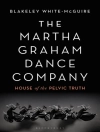This book details the Irish socialistic tracks pursued by Bernard Shaw and Sean O’Casey, mostly after 1916, that were arguably impacted by the executed James Connolly. The historical context is carefully unearthed, stretching from its 1894 roots via W. B. Yeats’ dream of Shaw as a menacing, yet grinning sewing machine, to Shaw’s and O’Casey’s 1928 masterworks. In the process, Shaw’s War Issues for Irishmen, Annajanska, the Bolshevik Empress, The Tragedy of an Elderly Gentleman, Saint Joan, The Intelligent Woman’s Guide to Socialism and Capitalism, and O’Casey’s The Story of the Irish Citizen Army, The Shadow of a Gunman, Juno and the Paycock, The Plough and the Stars, and The Silver Tassie are reconsidered, revealing previously undiscovered textures to the masterworks. All of which provides a rethinking, a reconsideration of Ireland’s great drama of the 1920s, as well as furthering the knowledge of Shaw, O’Casey, and Connolly.
Table des matières
Introduction.- Shaw, O’Casey, Connolly: Stitching the Foundation, 1890s-1915.- Revolutions: 1916/1917: Lynd, War Issues, the ITGWU.- Shaw’s Elderly Gentleman, O’Casey’s Trilogy Begins: Larkin/O’Brien.- Shaw’s Saint Joan: Martyred Vision.- The Plough and the Stars: The Lost Workers’ Republic.- The Intelligent Women’s Guide, The Silver Tassie, The Re-Conquest.- Epilogue.
A propos de l’auteur
Nelson O’Ceallaigh Ritschel is the author of Bernard Shaw, W. T. Stead, and the New Journalism (2017) and Shaw, Synge, Connolly, and Socialist Provocation (2011). He is a professor of Humanities, Massachusetts Maritime Academy.












